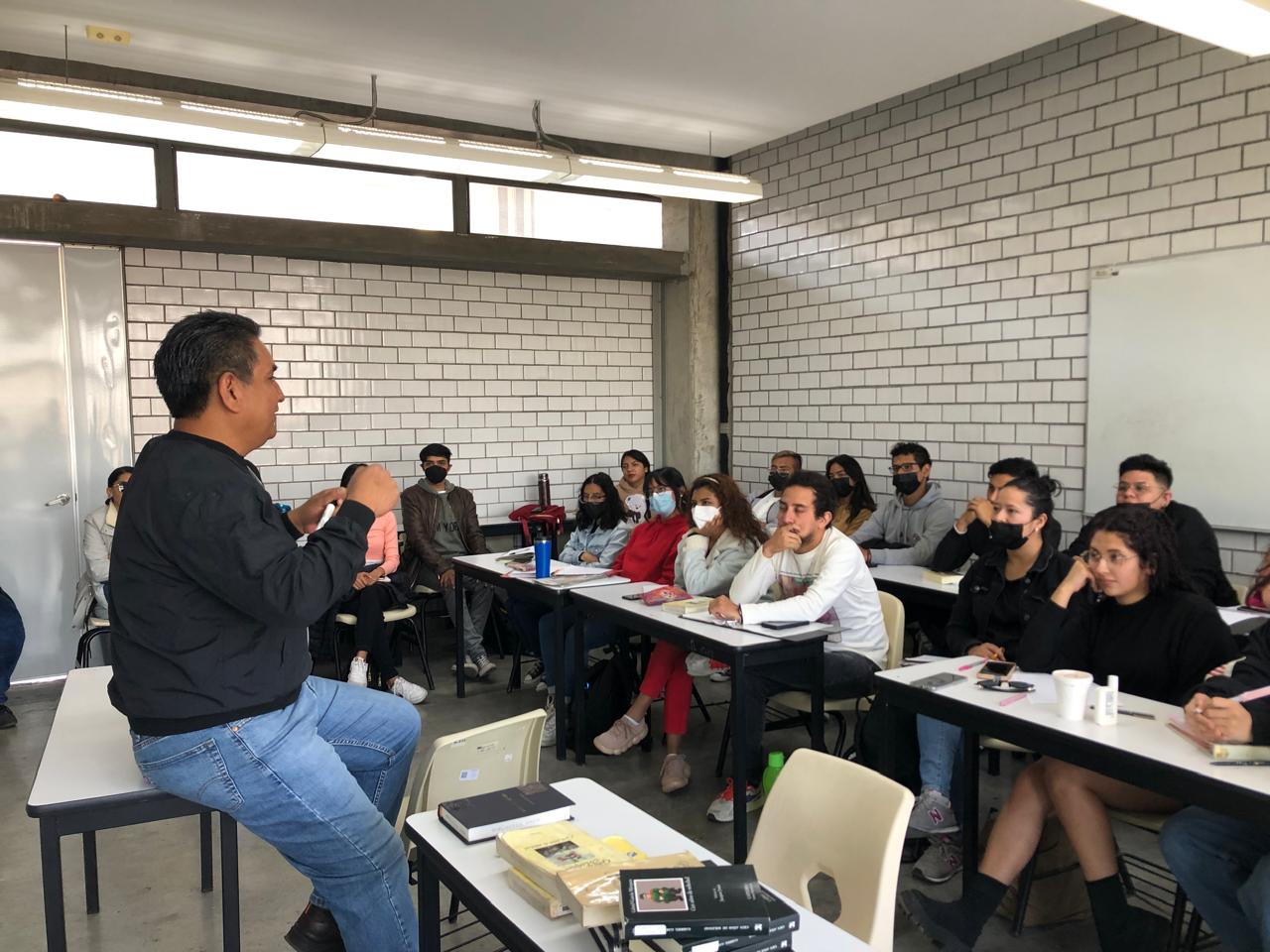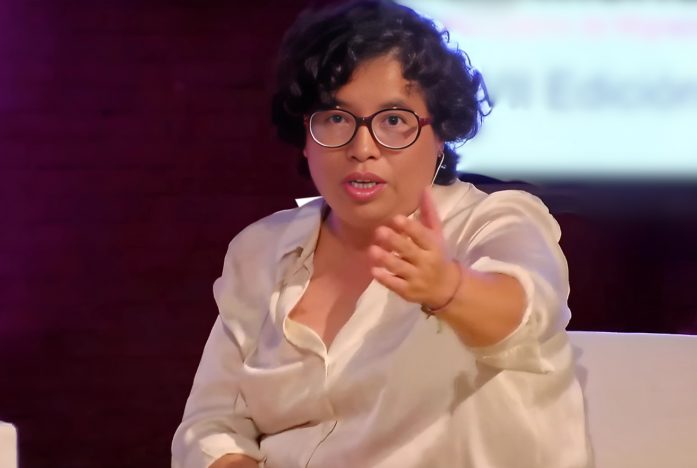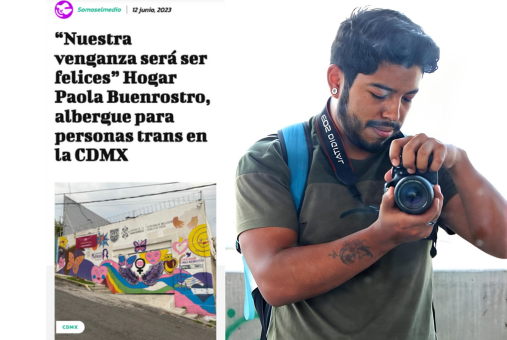Andrea Salais, a communication and culture student at the Autonomous University of Mexico City (UACM), spent up to six hours a day commuting from her home in the southeastern part of the city to her workplace, a call center in the city center, and then back home. To start work at 9 a.m., she left her house by 6 a.m., embarking on a journey that involved rides by bus, rapid bus and metro.
During those long commutes, Salais realized that, like her, hundreds of residents from the outskirts of Mexico City spent much of their lives on public transportation, with their quality of life further diminished by long workdays.
When tasked with creating a report for a journalism workshop for her degree at the UACM, Salais chose to examine how long commutes affect the quality of life for the residents of her borough Tláhuac toward southeastern reaches of the city. The result was the piece “ ‘Half My Life is Spent on Transport’: The Vital Cost of Endless Workdays in Mexico City,” which she co-reported with her classmate Elizabeth López.

The UACM journalism workshop works as a Media Lab for the production of digital, transmedia and collaborative content, which seeks to contribute to a more diverse and inclusive representation of the peripheries. (Photo: Courtesy of Taller de Periodismo UACM SLTZ)
“I based it on my own experience and went out looking for people with similarly long commutes, capturing how people travel tired and cramped, sleeping on the way to and from home,” Salais told LatAm Journalism Review (LJR).
Since journalist and sociologist Amarela Varela took over the journalism workshop at UACM’s San Lorenzo Tezonco campus outside Mexico City’s peripheral highway, her goal has been precisely this: to teach students to shed light through hyperlocal journalism on issues affecting them, their families, and neighbors in the peripheral neighborhoods of Mexico City, countering the stigma and information vacuum left by traditional media.
Varela told LJR that she sees a crisis in news production in Mexico due to the precariousness of the profession, alongside certain zones on the city’s outskirts that are traditionally undercovered. Varela also believes there is a readership crisis, as people increasingly consume less news in which they don’t see themselves represented.
“The topics students identify as interesting are the same ones that matter to their neighbors, to other young people,” Varela said. “These are topics overlooked by mainstream journalism and ones that AI cannot capture—stories that can disrupt this readership crisis.”
What the curriculum initially intended as a print journalism workshop, Varela transformed into a digital, multimedia, and collaborative journalism course, aiming to foster more diverse and inclusive representations of the outskirts, like the neighborhood where UACM is located.
The workshop is divided into two semesters. In the first, students learn how a newsroom operates and the main genres of journalism, such as news stories, narratives, and interviews. In the second semester, the workshop operates as a media lab, where students work in teams to produce reports. Classes focus on reporting, fact-checking, creating multimedia clips and content in various formats, Varela explained.

Mario Marlo, director of Somoselmedio digital media outlet, is one of the journalists who have acted as guest instructors at the workshop. (Photo: Courtesy of Taller de Periodismo UACM SLTZ)
Varela invites seasoned investigative journalists as guest instructors. Guests have included Gloria Muñoz, founder of Desinformémonos; Marcela Turati, co-founder of the Periodistas de a Pie network; and Mario Marlo, director of the digital outlet Somoselmedio, among others.
Desinformémonos and Somoselmedio are two of several media outlets with which Varela has formed partnerships, allowing students to pitch their stories for publication. Each year, Varela said, six to eight student-produced reports are published.
“They have to come up with material based on their own interests, while cultivating values that I believe are key, which are anti-racist, anti-patriarchal, and diverse,” said Varela.
In recent years, Mexico has seen an increase in “silence zones,” areas where media outlets avoid reporting due to violence and intimidation from authorities or organized crime.
But the information vacuum in Mexico City’s outskirts predates the spread of violence across the country, Amarela noted. Coverage of areas where her students live is mostly limited to crime, she added.
“And you can’t just blame organized crime for that,” she said. “Traditionally, the city’s outskirts haven’t been covered. There’s no journalistic interest—unless it’s the popular media covering accidents or violence. The eastern part of Mexico City isn’t considered newsworthy because it’s seen as ‘where the poor and stigmatized live.’”
Student José Francisco Carrasco, an alum of Varela’s workshop, acknowledges that his neighborhood, Santo Domingo in the southern Coyoacán borough, is considered one of the most dangerous. Local outlets primarily cover topics like drug trafficking, kidnapping gangs or water shortages.

Journalist and sociologist Amarela Varela seeks to teach students how to practice anti-racist, anti-patriarchal and diverse journalism. (Photo: Screenshot from YouTube)
However, Carrasco saw UACM’s journalism workshop as an opportunity to highlight that residents of peripheral neighborhoods also have unmet needs, particularly the LGBTQ+ population, of which he is part.
“I’ve encountered many LGBT people in my neighborhood who remain hidden or invisible. We lack spaces to connect and create support networks,” Carrasco told LJR. “There are no health campaigns targeting LGBT populations, no mechanisms for people to approach the government with a gender perspective.”
During the workshop, Carrasco wrote three articles, two of which were published in Somoselmedio: one on a shelter for trans people on the outskirts of Mexico City, and another on university groups in the LGBTQ+ pride march.
Varela said that in the current semester, students are writing about topics beyond crime, such as changes in products offered at markets in southeastern Mexico City due to the arrival of migrants from Central and South America.
Other students are exploring topics that, while related to violence, take a deeper approach, such as feminism and feminist self-defense.
“These topics come from the students because there’s always a femicide in their neighborhood, always violence against children, police violence against young people, unemployment,” said Varela. “There are always hyperlocal tragedies to report.”
Varela also encourages her students to frame their stories with a focus on solutions, so their pieces highlight positive aspects of life in the outskirts, challenging stigmas. An example, she said, is Carrasco’s report on the shelter for trans people.
“I tell them, ‘The local knowledge, the insights from your neighborhoods, which everyone fears, are pure gold for your stories, because they reveal survival practices and ways to celebrate life,’ ” she said. “I challenge them to create solutions journalism for these stigmatized spaces.”
Three of UACM’s five campuses are located on Mexico City’s outskirts, and much of its student body comes from low-income or vulnerable backgrounds. Varela noted that many of her students are children of families who migrated from the countryside to the city in past decades, and some are young parents or single mothers.
“It’s a university for racialized, marginalized young people in the outskirts. There’s a class and racial profile based on where they live. When they apply for jobs and mention they’re from UACM, there’s a kind of negative perception,” Varela said.

Student José Francisco Carrasco has made visible through his stories in the workshop the problems of the LGBT+ population in neighborhoods like his. (Photo: Screenshot / Courtesy José Carrasco)
She encourages her journalism students to focus on serving audiences in similar circumstances rather than seeking viral hits, because the reality they live and report on is shared by a large segment of Mexico City’s residents.
This population, Varela added, represents audiences underrepresented in traditional media who need information that resonates with them.
“I tell students they should pursue journalism for their peers, to let go of the desire for viral content, since not every topic has viral appeal,” Varela said. “We work to destigmatize life in marginalized neighborhoods. It’s hyperlocal, transmedia journalism that aims to dignify the communities the students come from.”